
Attracting more than 2.5 million tourists annually, Glasgow is renowned for its rich hospitality, diverse cuisine and legendary rivalry between two of the country’s most prominent football teams, Rangers and Celtic. While its main attractions are deservedly popular, Glasgow also boasts gobs of hidden gems and off-the-beaten-track places, where visitors can have an authentic glimpse of Scotland’s second largest city free of throngs.
Beginning with a single artwork in 2008, the Glasgow Mural Trail has expanded since its inception to include more than 30 unique pieces of street art. Brightening up dark streets and disused walls, the diverse selection of murals, all created by local artists, has been designated as a trail for visitors to follow, helping them to discover the best shops and restaurants in the city centre while enjoying the creative pieces.
The entire attraction is free and accessible to anyone who wishes to awe the numerous paintings along the trail, comprising such varying artworks as the Osborne Street depiction of Scottish actor and comedian, Sir Billy Connolly, to the famous Glasgow Panda on Mitchell Lane.
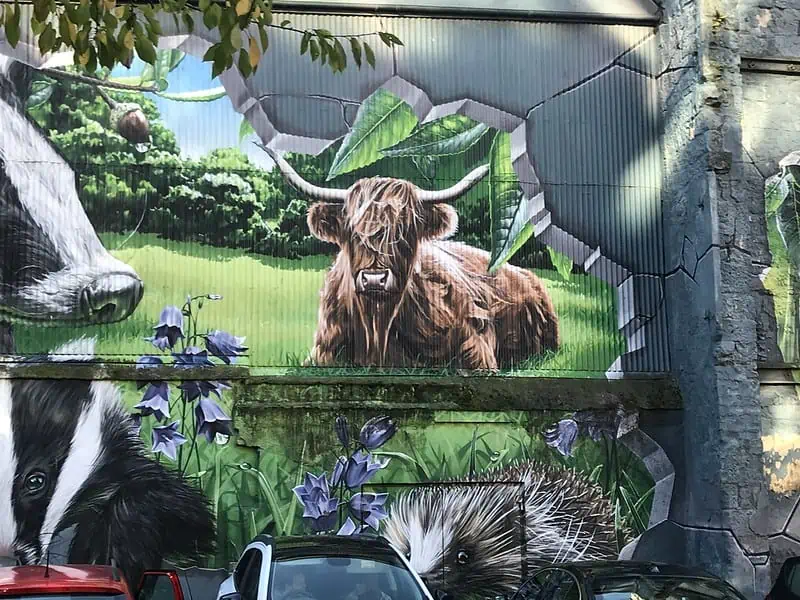
One of many artworks belonging to Glasgow Mural Trail
photography by: Jim McDougall/ Flickr
On the outskirts of Glasgow’s city centre, a winding circular path on a grassy hillock leads to a flagpole crowned by a lofty metal flag. Officially called the “Spiral Hill Flagpole”, the verdant knoll is colloquially known as the “Plean Street Pyramid” or the “Blawarthill Ziggurat”. Despite its intriguing presence, the site itself remains shrouded in mystery, lacking any plaques or descriptions about its origins.
Historical traces and the best guesses of local historians suggest that in the late 1800’s, the place was home to Blawarthill Farm. As the city grew, the green space was converted into two 20-storey tower blocks in the 1960’s. Following their demolition in 2010, it is believed that the rubble was compacted into the mound on which the flagpole now stands.
View this post on Instagram
Dominated by two towering blue metal gasometers that rise above the surrounding, post-industrial landscape, the Provan Gas Works plant is practically unknown to tourists, yet among locals is considered a significant landmark. Once an important facility for Britain’s energy needs, privatisation of the UK gas industry under the Thatcher government during the 1980’s precipitated the decline of the facility.
Now largely unmanned and used solely for gas storage, the twin gasometers are visible from the two motorways connecting Glasgow and Edinburgh, thus forming an interurban gateway. This vantage point has led to the display of giant banners promoting the city, often endowed with typical Glaswegian humour.
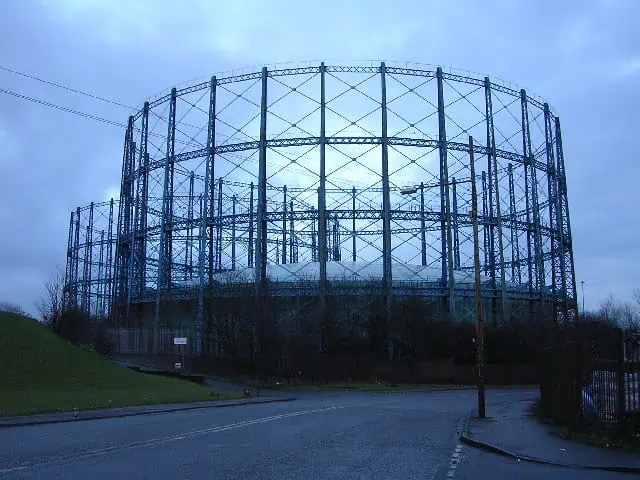
The skeletal remnants of Provan Gas Works
photography by: Chris Upson/ Wikimedia Commons
Located south of the city centre, Crookston Castle is the only surviving medieval castle as well as the second oldest building in Glasgow, surpassed in age only by the 12th century cathedral. Built by the Stewarts of Danley around 1400AD, its tall central tower and hilltop location offer panoramic views of the surrounding area. It is thought that Mary, Queen of Scots, once stayed in the palace, much of which was damaged and then repaired following a siege in 1544. During the Second World War, the edifice’s strategic positioning led to its employment as a watch tower. As of today, the castle is owned and managed on behalf of visitors by the National Trust for Scotland.
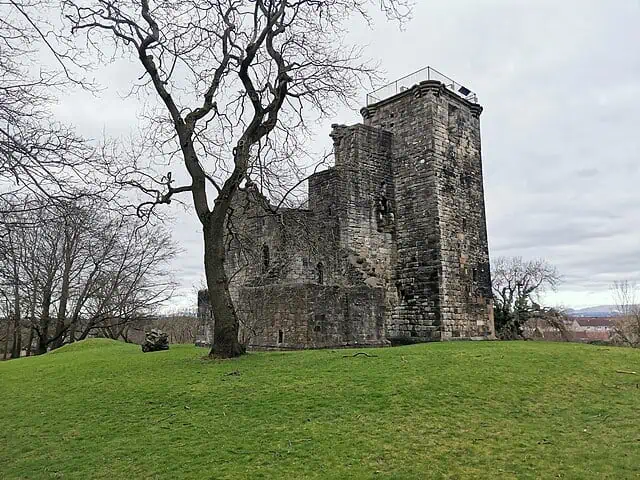
Steeped in greenery, the Crookston Castle
photography by: Crowsus/ Wikimedia Commons
Spanning across 20 square kilometres of lakes, forests and meadows, Seven Lochs Wetland Park is the largest nature park in greater Glasgow, a vestige of the last Ice Age. Formerly home to an ample coal industry, this natural enclave plays host to a myriad of bird species including buzzards, willow warblers, chiffchaffs and whitethroat among others.
As its name implies, the nature reserve is home 7 main lochs – Bishop Loch, Hogganfield Loch, Lochend Loch, Frankfield Loch, Woodend Loch, Garnqueen Loch and Johnston Loch, but there are also several smaller ones in between. As the park is crisscrossed by more than 50 kilometres of pathways and cycling trails, it offers a much-needed respite from the hustle and bustle of the city.
Aside from its natural merit, the place also has its fair share of historical significance; stone and flint tools dating back more than 10,000 years were found at Woodend Loch, suggesting that the area was home to some of Scotland’s earliest humans.
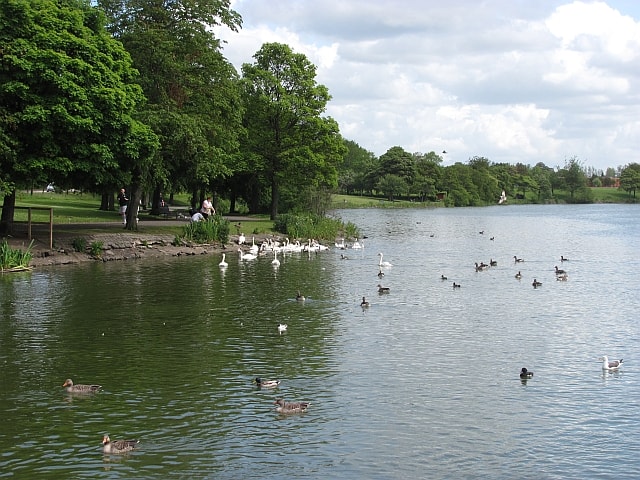
Ducks, swans and other birds wade across Hogganfield Loch
photography by: Richard Webb/ geograph.org.uk
As the only surviving Edwardian public bathhouse in the city, the Govanhill Baths are the last of their kind in Glasgow. Built in 1917, the edifice reflects the architectural style of that period, with features typical of public bathhouses in the early 20th Century such as large windows and distinctive, colourful brickwork.
The site first opened its doors in the 1910’s and despite a period of closure in 2001, the building is now under refurbishment following a long community campaign to ensure its survival. Under the supervision of the Govanhill Baths Community Trust, the redevelopment plans include three fully functioning swimming pools as well as an art studio, kitchen and gym, all open to members of the public and the local community. Seasonal events including festive markets and an international carnival also take place in this iconic building.
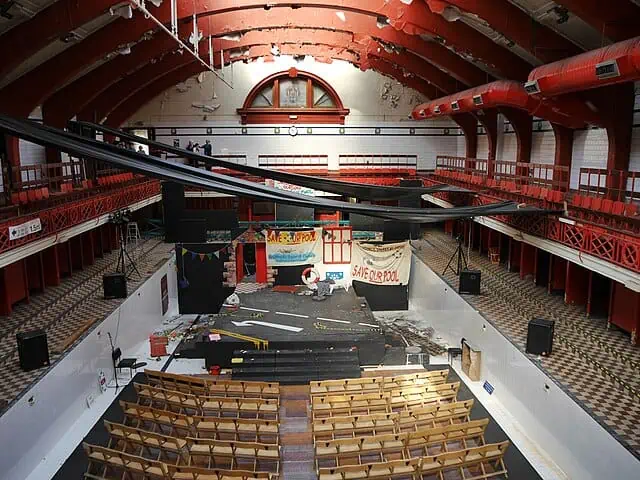
The lavish, pre-renovation interior of Govanhill Baths
photography by: Edwardx/ Wikimedia Commons
The purported brainchild of Scottish architect William Adam, Pollok House is an opulent Georgian-style home on the outskirts of Glasgow, dating back to the mid-18th century. The estate formerly belonged to the powerful Stirling-Maxwell family, who lived on this site for 600 years and 27 generations. One member of the family, Sir John Stirling-Maxwell, was the Conservative MP for Glasgow from 1895 – 1906. He died at Pollok House in 1956.
Although the house itself is closed for refurbishment until 2025, visitors can still enjoy the surrounding grounds and gardens including the Woodland Garden, home to the Pollok Beech. This 250-year-old wizened tree was recognized in 2002 as one of the top hundred heritage trees in Scotland. The oddly-shaped beech grows on a mound that historians believe marks the site of a medieval castle, possibly from the 13th Century.
As host to the 2021 COP26 climate conference, Glasgow was rewarded by the gift of the Hope Sculpture, a bequest from more than 50 companies to the city to mark this important event. Materials for the sculpture were donated free of charge and the artwork was created by artist Steuart Padwick.
The sculpture, depicting an age, gender, race-neutral child with outstretched arms atop a tower, is notable for several reasons. It is the first sculpture in the UK to be built from 100% cement free concrete, with a carbon footprint approximately 70% lower than traditional concrete. Continuing the environmental theme, the sculpture makes use of recycled materials including gas piping.
Freely accessible to the public, this artwork is located in the Cuningar Loop, a woodland park created in 2010 in a meander of the River Clyde. As well as housing the Hope Sculpture, the park features several riverside walkways and bicycle paths, Scotland’s first outdoor bouldering park and the Cuningar Stones, an art project by Glasgow artist James Winnett, which charts the local history of the area across 15 permanent stones.
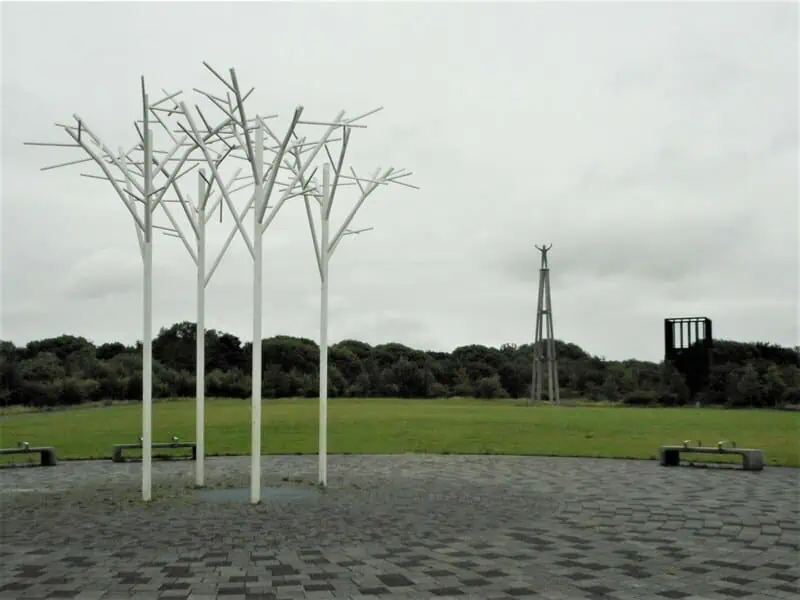
A distant glimpse of Hope Sculpture as seen from a nearby square
photography by: Richard Sutcliffe/ geograph.org.uk